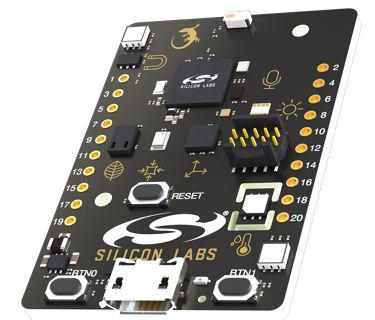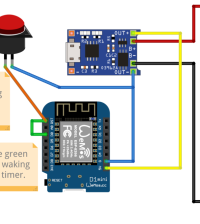- How to Adjust X and Y Axis Scale in Arduino Serial Plotter (No Extra Software Needed)Posted 2 months ago
- Elettronici Entusiasti: Inspiring Makers at Maker Faire Rome 2024Posted 2 months ago
- makeITcircular 2024 content launched – Part of Maker Faire Rome 2024Posted 5 months ago
- Application For Maker Faire Rome 2024: Deadline June 20thPosted 6 months ago
- Building a 3D Digital Clock with ArduinoPosted 11 months ago
- Creating a controller for Minecraft with realistic body movements using ArduinoPosted 12 months ago
- Snowflake with ArduinoPosted 12 months ago
- Holographic Christmas TreePosted 12 months ago
- Segstick: Build Your Own Self-Balancing Vehicle in Just 2 Days with ArduinoPosted 1 year ago
- ZSWatch: An Open-Source Smartwatch Project Based on the Zephyr Operating SystemPosted 1 year ago
UrsaLeo Pi IoT Development Kit Offers Google Cloud Storage and Analytics

UK-based distributor RS Components announced the availability of San Francisco based UrsaLeo’s UrsaLeo Pi IoT development kit. UrsaLeo’s kit, which was recently introduced by Mouser under its original UrsaLeo UL-RPI1S2R2 name, is designed to send sensor input to Google Cloud for storage and analytics. The kit is designed for Industry 4.0, automotive diagnostics, healthcare, and general data monitoring.
The UrsaLeo Pi offers the Silicon Labs Thunderboard Sense 2 sensor board combined with a powerful Raspberry Pi 3 SBC.
The Thunderboard Sensor 2 (or Thunderboard 2) board provides temperature, humidity, UV, ambient light, barometric pressure, indoor air quality, and gas sensors. You also get a 6-axis inertial sensor, a digital microphone, and a Hall sensor. The board is equipped with Silicon Labs’ EFR32 Mighty Gecko multi-protocol radio, which supports 2.4GHz wireless technologies such as Bluetooth Low Energy (BLE), Thread, ZigBee, or proprietary short-range protocols.
The kit is pre-loaded with an OTA-updatable Linux stack based on Yocto Project code. It automatically links up to a pre-registered Google Cloud account. Up to 50MB of data per month can be sent to the cloud platform free of charge.
A customizable dashboard “allows users to view sensor data and launch IoT applications such as storage and analytics,” says RS Components. The dashboard, which can be shared with third parties, is said to streamline the addition of new sensors and support user-definable events to trigger alerts.
















